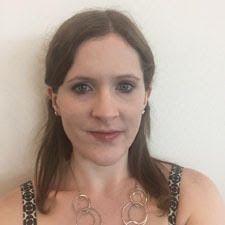TV Writers Need to Stop Killing Off Their Gay Characters
The "Bury Your Gays" trope remains both prevalent and deeply harmful.


Despite LGBT representation on television hitting a record high in 2016, queer TV also hit something of a crisis point last year—with an epidemic of lesbian character deaths sparking anger, media criticism, and fan boycotts. Most notable was the death of Lexa (Alycia Debnam-Carey) on The CW's The 100, one half of a fan-favorite lesbian couple that viewers had been encouraged to invest in.

This latest slew of queer deaths is part of a long-standing trope dubbed "Bury Your Gays"—where gay characters are regularly killed off, often following a moment of happiness or the consummation of a same-sex relationship. During a recent GLAAD panel at the TCA Press Tour, advocates and creators alike emphasized the need for TV to turn the tide on this trope.
"TV has kind of failed queer women in the past two years," said Megan Townsend, GLAAD's director of entertainment research and analysis. "Just since the beginning of 2015, we've lost more than 50 queer women on television—often in violent ways that benefit somebody else's story rather than anything contributing to that character's own arc."
"Since the beginning of 2015, we've lost more than 50 queer women on television—often in violent ways that benefit somebody else's story."
The most popular counter-argument to this point—often employed by showrunners faced with criticism—basically comes down to "equal-opportunity killing." Any character can be killed, nobody is safe, and you can't expect LGBTQ characters to be treated any differently. Sure. But when LGBTQ characters are so profoundly underrepresented on television, their fates do resonate on a different level, and the stakes are higher.
Here's the thing: even the most brutal show has its bulletproof characters, the ones you know are never actually in any real danger. Of course Jon Snow was going to come back to life in Game of Thrones. Of course Rick Grimes is going to be just fine at least until The Walking Dead series finale. But those safe characters are invariably straight, and Townsend is challenging that status quo.
"We need more safe LGBTQ people at the center of the story," she said. "The safe character who can't be killed, the one whose story is nuanced and fully developed—rather than being stuck in the ensemble, which is still where we see a lot of LGBTQ characters relegated to."
Also on the panel was showrunner Emily Andras, who helms Wynonna Earp—a series that's been highly praised for its focus on queer women. More specifically, queer women who get to live. "We debuted in a year where just a ton of lesbians got killed on television," Andras said. "And we did something interesting with one of our gay characters, where we put her in a bulletproof vest, and then she got shot."
Get exclusive access to fashion and beauty trends, hot-off-the-press celebrity news, and more.
Andras went on to explain exactly why the "equal-opportunity killing" argument doesn't cut it, and why showrunners have a responsibility to do better by their LGBTQ characters. "All I see right now on social media is kids who are seeing themselves on television getting killed," she said. "If you live in a small town where you're already struggling to come out, or see yourself represented, that can do a lot of damage. I hope we get to the point where we have enough [gay] heroes, that we can also have amazing gay villains and amazing everything across the board. But right now, there is a bit of responsibility that we need to be aware of. I think we can write three-dimensional LGBT characters, and write better, more interesting, more unique stories. I really think we can."
RELATED STORY
Follow Marie Claire on Facebook for the latest celeb news, beauty tips, fascinating reads, livestream video, and more.
Emma Dibdin is a freelance writer based in Los Angeles who writes about culture, mental health, and true crime. She loves owls, hates cilantro, and can find the queer subtext in literally anything.

